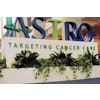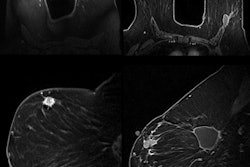A study presenting the 10-year outcomes of accelerated partial breast irradiation (APBI) treatment in early-stage, low-risk breast cancer patients gives reason to cheer, finding disease-free survival to be comparable for all patients.
APBI is the preferred choice of radiation therapy for many women diagnosed with early-stage, low-risk breast cancer. APBI, a five- to seven-day treatment program, is much more convenient than conventional whole-breast irradiation, which typically is administered five days a week for six to seven weeks. The condensed treatment time period is also more financially palatable, reducing transportation-related costs and, for working women, dramatically reducing interruptions from work.
The caveat about APBI is that this treatment protocol is relatively new, and proof that it works as effectively as conventional radiation therapy doesn't exist. Therefore, guidelines issued by the American Society for Radiation Oncology (ASTRO) in Fairfax, VA, for its use outside the context of a clinical trial are conservative. Women are categorized as being "suitable," "cautionary," or "unsuitable" based on 16 different criteria.
For patients diagnosed with ductal carcinoma in situ (DCIS), being younger than 50 is a high-risk factor for "unsuitability." For patients with invasive cancers, high-risk factors include having one to three positive lymph nodes, a final margin status of less than 2 mm, a negative estrogen-receptor status, and/or unfavorable pathological findings.
The radiation oncology department at William Beaumont Hospital of Royal Oak, MI, was an early adopter of APBI. Its patient cohort of 199 patients included 41 patients, or 20%, who would today be considered unsuitable to receive the treatment. Michelle Wallace, a radiation oncology nurse clinician, told attendees at the American Brachytherapy Society (ABS) meeting recently held in Atlanta that these patients were treated before July 2009, the date when ASTRO guidelines were published.
The patient cohort was followed for a median of 10.6 years, with a range of one to 14.6 years. At the time of treatment, 46% of patients categorized as unsuitable were younger than 50. Fifty-six percent had positive nodes, 2% had close margins, and 7% had extensive intraductal components (EIC), all negative selection criteria. Of the 41 patients, five had two negative variables and one had three.
Unsuitable patients had a more favorable local recurrence rate of 2.5%, compared with 4.8% for women in the suitable and cautionary categories. Their overall survival outcomes were also higher at 82.1% compared to 73.9%, Wallace reported.
However, disease-free survival outcomes were slightly better for the suitable-cautionary group at 92.4%, compared with 88.9% for the unsuitable group. Cause-specific survival outcomes were also similar at 95.4% and 92.2%, respectively.
To determine predictors for developing an ipsilateral breast tumor recurrence following APBI treatment employing multicatheter interstitial brachytherapy, the researchers conducted a univariate analysis examining the risk factors defined by the ASTRO consensus panel guidelines. There were no statistically significant findings for developing ipsilateral breast tumor recurrence when evaluating age as a continuous or categorical value, T-stage, tumor size, final margin status, presence of EIC, estrogen-receptor status, and lymph node positivity, according to Wallace.
"Ten-year control was acceptable for all women who received this treatment," Wallace said. She pointed out that the categories the ASTRO guidelines created were determined by previously published data, not by negative data. "No data have yet been published or presented to show that women with cautionary or unsuitable status do any worse."
"William Beaumont Hospital currently offers APBI as one treatment option to women who meet the criteria of the ASTRO consent guidelines, and many patients want this option," she said. "Women who are categorized as unsuitable must enroll in the phase III randomized clinical trial [Radiation Therapy Oncology Group 0143/National Surgical Adjuvant Breast and Bowel Project B-39]."
Remarks at ASBS
Five-year outcomes of APBI patients enrolled in the American Society of Breast Surgeons (ASBS) MammoSite registry were also comparable, regardless of the category that the ASTRO guidelines defined them. These findings were presented by Dr. Peter Beitsch, director of the Dallas Breast Center, at the society's annual meeting held April 28-May 2 in Las Vegas.
Beitsch was the lead author of a study of the five-year outcomes of 1,449 patients who received MammoSite breast brachytherapy-delivered APBI. Twelve percent (176) of patients had unsuitable criteria: 130 patients were younger than 50, 38 had positive lymph nodes, 13 had positive margins, six had tumors greater than 3 cm in size, and 11 had an EIC greater than 3 cm.
After a median follow up of 49.2 months, five-year actual rates of ipsilateral breast tumor recurrence were similar for both groups, with suitable-cautionary patients having a 3.62% recurrence rate and unsuitable patients a 5.28% rate. Only negative estrogen-receptor status was associated with the five-year rate of ipsilateral breast tumor recurrence, Beitsch reported.
"The ASTRO guidelines considerably restrict the number of women qualifying for APBI," Beitsch said. "Our study clearly suggests that the ASTRO criteria for APBI are not a predictor of eventual patient outcomes."
"With today's rapidly expanding understanding of breast disease, sophisticated therapies, and advanced technologies, treatment is increasingly tailored to the individual patient and the nuances of her diseases," he noted. "Excluding women from APBI therapy who are a few months shy of their 50th birthday is simply arbitrary and violates common sense."
Like Wallace, Beitsch emphasized that physicians and patients must remember that ASTRO guidelines are not based on evidence that accelerated radiation has a negative patient impact.
"The ASTRO guidelines were developed with arbitrary categories because current literature fails to provide a certain level of supporting evidence for the efficacy of APBI in some groups of women," he said. "This is an important difference, and we hope that insurance companies, in particular, will take this into account."
By Cynthia E. Keen
AuntMinnie.com staff writer
May 31, 2010
Related Reading
New studies hint that APBI could be used in more patients, December 22, 2009
ASTRO publishes APBI guidelines for early-stage breast cancer, July 16, 2009
Effectiveness of APBI breast cancer treatment is age-neutral, study suggests, April 20, 2009
Study: APBI compares favorably to standard RT, October 1, 2008
Accelerated breast radiotherapy leads to less toxicity, radiation exposure, September 10, 2007
Copyright © 2010 AuntMinnie.com



















